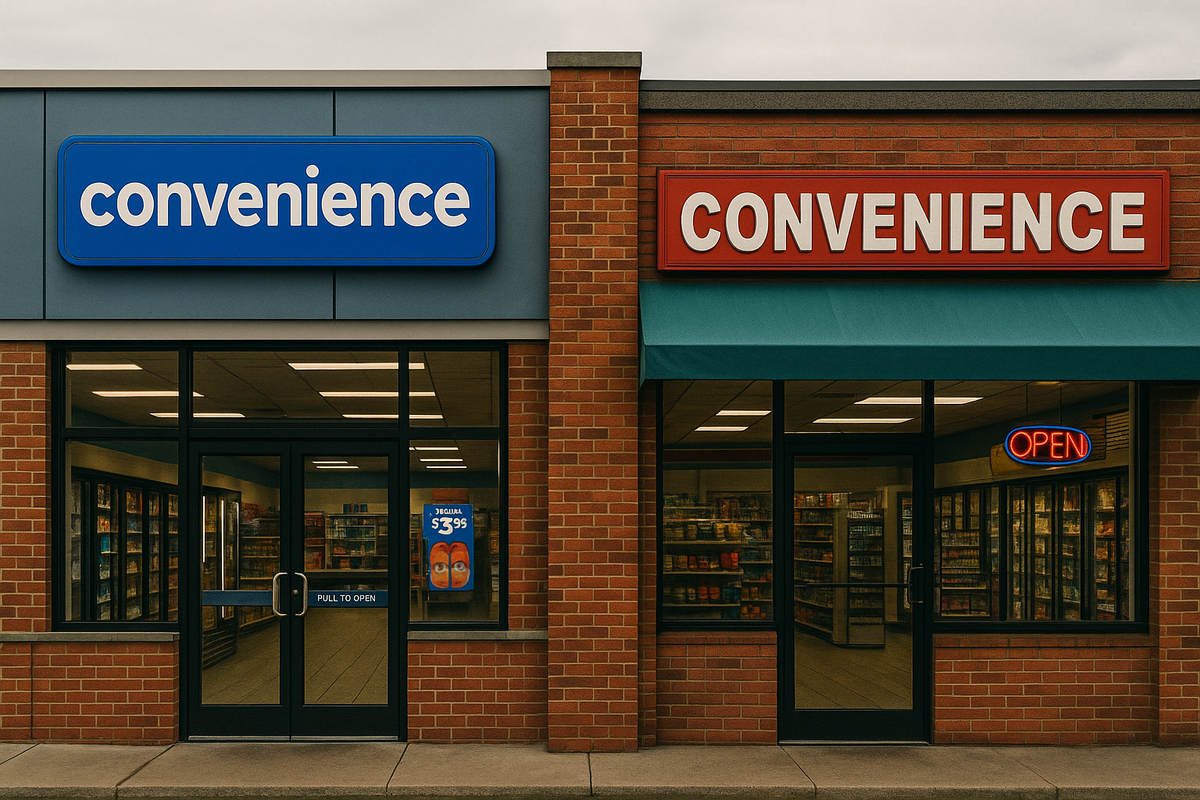What Is Convenience Store Industry Consolidation?
Convenience store industry consolidation is when several convenience store companies join forces through mergers or acquisitions. Instead of hundreds of "mom-and-pop" shops, a handful of big players now run more stores.

Convenience store industry consolidation is when several convenience store companies—big or small—join forces, usually through mergers or acquisitions. Instead of hundreds of “mom-and-pop” shops and small chains dotting the landscape, you start to see a handful of big players running more and more stores16711. In the U.S., this trend is picking up steam: most c-stores are still single-store operations, but lately, larger chains like 7-Eleven and Circle K are snapping up smaller outfits at a record pace1713. The result? The industry, once scattered and fiercely local, is becoming more centralized and controlled by fewer, much larger companies.
What Are the Goals of Consolidation?
Why are so many convenience stores merging or getting bought out? Well, it’s not just for bragging rights. Here’s what’s driving the rush:
- Economies of Scale: Bigger companies can buy in bulk, negotiate better deals, and run their operations more efficiently, cutting costs across the board167.
- Market Expansion: Acquiring existing stores is faster and cheaper than building new ones from scratch, especially when breaking into new regions1713.
- Leverage in Supply Chains: Larger networks mean more negotiating power with suppliers, which can lead to better prices and exclusive products467.
- Tech and Innovation: With more resources, big chains can invest in things like digital payment systems, loyalty programs, and electric vehicle charging stations25912.
- Survival: With rising costs, labor shortages, and changing consumer habits, smaller operators often find it tough to keep up. Merging can be a lifeline2513.
How Does Consolidation Impact the Ecosystem?
Consolidation shakes up the entire convenience store ecosystem—employees, suppliers, communities, and even competitors. Let’s break it down:
Employees
- Job Security and Roles: When companies merge, there’s often overlap in roles, especially in management, supply chain, and merchandising. Some folks may find new opportunities, but others could face layoffs or restructuring38.
- Organizational Changes: Employees might have to adapt to new systems, processes, or even a different company culture. For those in senior merchandising, inventory, executive leadership, or supply chain roles, this can mean redefined responsibilities or reporting lines1218192021.
- Wages and Benefits: Larger chains may offer more standardized benefits, but with less competition for workers, wages could stagnate or even drop in some areas38.
Store Owners and Operators
- Small Operators: Many independent owners feel the squeeze. They can either sell and cash out, try to compete, or risk being pushed out by bigger rivals with deeper pockets16711.
- Chain Owners: For those on the buying side, it’s a golden opportunity to expand quickly and dominate new markets13.
Suppliers and Distributors
- Bargaining Power: With fewer, bigger buyers, suppliers often have to accept lower prices or tougher terms48.
- Market Access: Smaller, local suppliers might be dropped in favor of national contracts, making it harder for them to stay afloat8.
- Innovation Pressure: Suppliers may need to step up their game, offering better logistics, marketing, or data-sharing to keep big clients happy4.
Customers
- Prices: With less competition, prices could inch higher, especially in areas where one chain dominates348.
- Product Variety: Big chains might streamline offerings, focusing on best-sellers and private labels, which can mean less local flavor or fewer niche products48.
- Access: In rural areas, consolidation can be a double-edged sword. Big chains might keep stores open where independents would close, but if a chain decides to shut down, whole communities might lose their only nearby source of groceries or essentials138.
Communities
- Local Economy: The loss of independent stores can hurt local economies, reducing jobs and the money circulating locally8.
- Food Security: In some rural areas, c-stores are the only place to buy groceries. If a consolidated chain closes a store, residents might be left with nowhere to shop for fresh food138.
- Health: As local grocers disappear, communities may have less access to fresh produce and more to processed foods, potentially impacting public health8.
Competitors
- Quick-Service Restaurants (QSRs): As big c-store chains ramp up their food service game, they’re giving fast-food joints a run for their money. Expect more competition for your lunch dollar910.
- Other Retailers: Supermarkets and dollar stores are also feeling the heat, especially as c-stores expand their product lines and offerings810.
The Road Ahead
The convenience store industry is at a crossroads. With so many single-store operators still out there, there’s plenty of room for more mergers and acquisitions16711. For employees, suppliers, and communities, the changes can feel like a wild ride—sometimes for better, sometimes for worse. Whether you’re stocking shelves, managing inventory, or steering the ship from the executive suite, staying nimble and open to change is the name of the game.
In the end, consolidation isn’t just about bigger companies getting even bigger. It’s about adapting to a world where costs are rising, technology is king, and customers expect more every day. For those who can roll with the punches, there’s plenty of opportunity ahead. For those who can’t, well, it might be time to read the writing on the wall.





